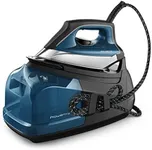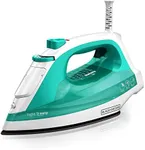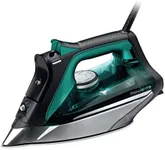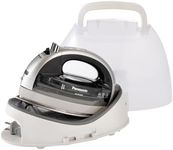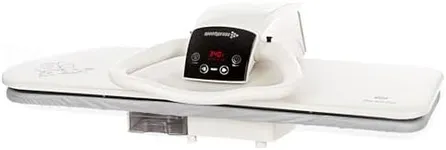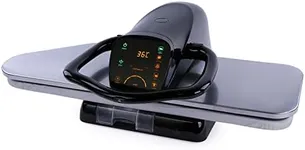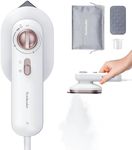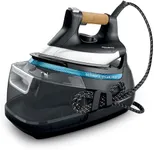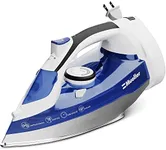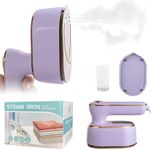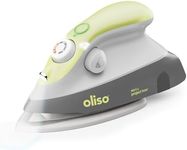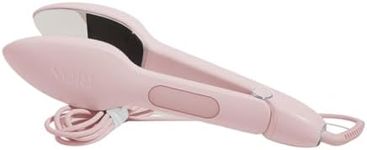Buying Guide for the Best Steam Press Irons
Choosing the right steam press iron can make a significant difference in how efficiently and effectively you can press your clothes. Steam press irons are designed to provide a professional finish to your garments, saving you time and effort compared to traditional irons. When selecting a steam press iron, it's important to consider several key specifications to ensure you get the best fit for your needs. Here are the main specs to look out for and how to navigate them.Steam OutputSteam output refers to the amount of steam the iron can produce, usually measured in grams per minute (g/min). This spec is important because higher steam output can help remove wrinkles more effectively and quickly. Steam output can range from around 20 g/min to over 100 g/min. For light, everyday ironing, a lower steam output may suffice. However, for heavy fabrics or frequent use, a higher steam output will be more efficient and provide better results.
Water Tank CapacityThe water tank capacity indicates how much water the iron can hold, which directly affects how long you can iron without needing to refill. This is important for convenience and efficiency. Capacities can range from around 200 ml to over 1 liter. If you have a lot of ironing to do in one session, a larger tank will be beneficial as it reduces the frequency of refills. For occasional or light use, a smaller tank may be sufficient and make the iron lighter and easier to handle.
Heat-Up TimeHeat-up time is the duration it takes for the iron to reach the desired temperature and be ready for use. This is important for saving time, especially if you are in a hurry. Heat-up times can vary from a few seconds to several minutes. If you often find yourself needing to iron clothes quickly, look for a steam press iron with a shorter heat-up time. For less frequent use, a longer heat-up time may not be as critical.
Temperature SettingsTemperature settings allow you to adjust the heat of the iron to suit different types of fabrics. This is important to prevent damage to delicate fabrics and to ensure effective pressing of tougher materials. Some irons come with a few basic settings, while others offer a wide range of precise temperature controls. If you iron a variety of fabrics, look for an iron with multiple temperature settings. For more uniform fabric types, fewer settings may be sufficient.
Soleplate MaterialThe soleplate is the flat surface of the iron that comes into contact with your clothes. The material of the soleplate affects its durability, smoothness, and heat distribution. Common materials include stainless steel, ceramic, and non-stick coatings. Stainless steel is durable and smooth, ceramic offers even heat distribution and is gentle on fabrics, and non-stick coatings prevent clothes from sticking. Choose a soleplate material based on your ironing habits and the types of fabrics you frequently press.
Size and WeightThe size and weight of the steam press iron can impact its ease of use and storage. This is important for comfort and convenience, especially if you have limited storage space or need to move the iron frequently. Larger, heavier irons may offer more pressing power but can be cumbersome to handle. Smaller, lighter irons are easier to maneuver and store but may have smaller pressing areas. Consider your physical strength, storage space, and how often you will be using the iron when choosing the size and weight.
Safety FeaturesSafety features such as automatic shut-off, anti-drip systems, and heat-resistant handles are important for preventing accidents and ensuring safe operation. Automatic shut-off turns the iron off if left unattended for a certain period, reducing the risk of fire. Anti-drip systems prevent water from leaking and staining clothes. Heat-resistant handles protect your hands from burns. If safety is a priority for you, look for a steam press iron with these features to ensure peace of mind while ironing.
